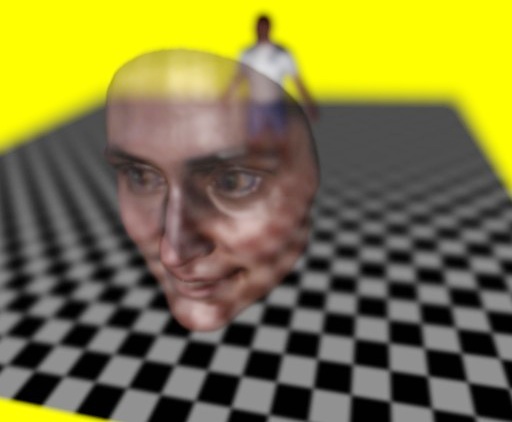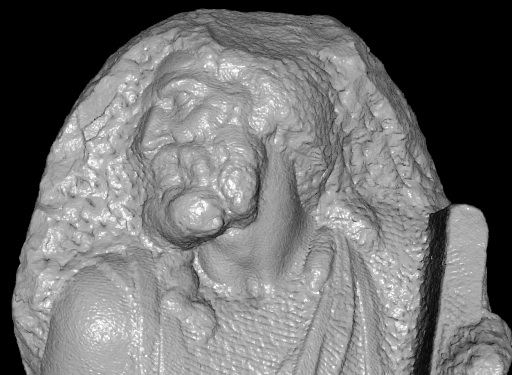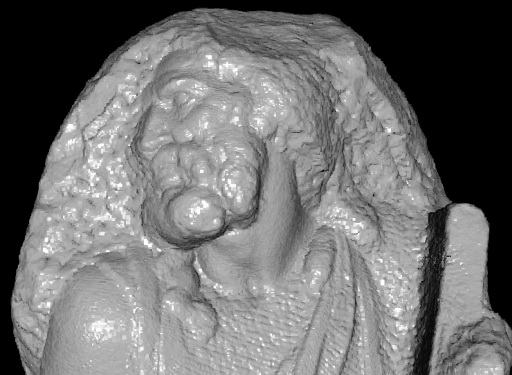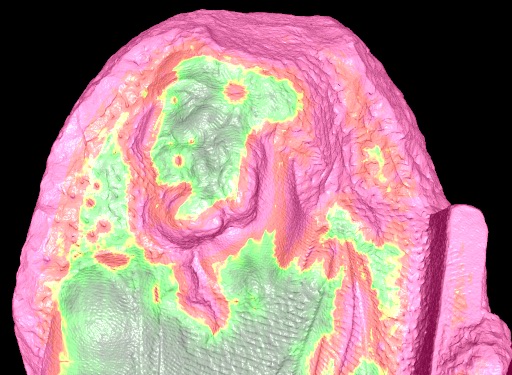The aim of the project is to develop new algorithms for point sample rendering and to design suitable data structures for representation of point samples, exploiting the techniques for geometry compression.
The emphasis is laid on general applicability of new algorithms, so that they will be usable for a widest possible class of 3D objects, and also on the possibility of combining point sampling with classical geometry modeling techniques.
Depth of field
We have developed an algorithm for depth-of-field rendering for point based objects. This algorithm is an extension of the EWA surface splatting. We support order independent transparency. The speed of the algorithm is independent of the amount of depth blur added to the image (see the image below).
|
|||
|
Figure 1:
Example of DOF rendering with semitransparent surface.
Left: no DOF. Middle: DOF is on and the transparent
mask is in focus. Right: the male body is in focus, the mask is out of focus.
|
Perceptually optimized LOD selection
We currently investigate the possibilities of optimizing the LOD selection by perceptual criteria. Since the human eye is not equally sensitive to all the features in the model, we can guide the LOD selection process by the feature visual importance for the final image.
|
||||
|
Figure 2: Four different levels of detail of St. Matthew
|
We use the Visual Difference Predictor (VDP) to find the visual difference between two images (rendered from different levels of detail) - see figure 2.
|
|||
|
Figure 3: VDP responses for different LODs (superposed on the original images).
|









